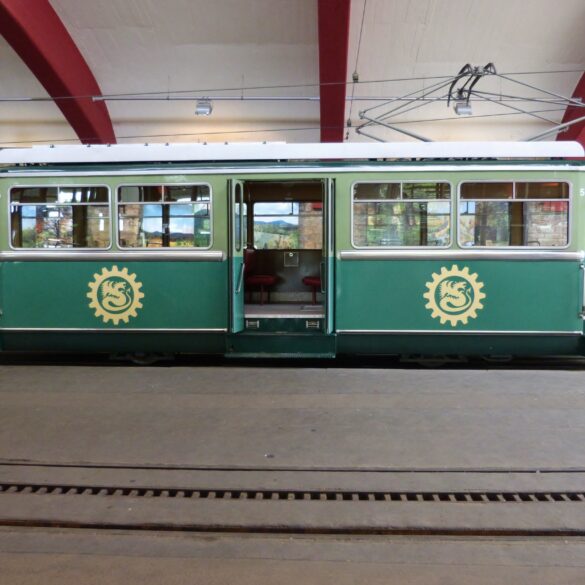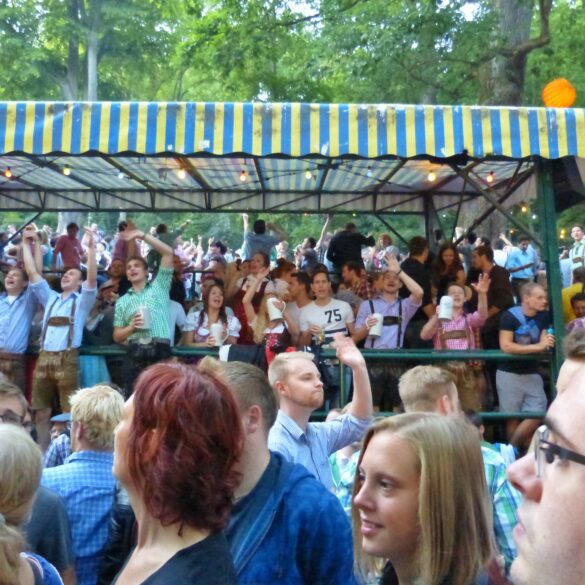A Hidden Gem
Did you know that the Oxo company, of bouillon cube fame, was founded by a man who was an apprentice in Heppenheim, Germany?
That of course was not the main reason for our visit to that town. It was just a fun fact that we learned while we were there.
Heppenheim has a particularly nice market square with a beautiful town hall.

It was built in 1551 but has had several additions and renovations since then.
This well in the market square was built in the late 1600s and the statue was built in 1755.

The adorable little boy in the sailor suit was having a grand old time being led around the rim of the well by his dad.
I originally took this next photo because you can get a glimpse between the two houses of the castle up on the hill.

I later found out that the house on the left was the birthplace of Margaretha Berg, maternal grandmother of Grace Kelly who later became Princess Grace of Monaco.
You can see why this 17th-century house is referred to as a stilt house.

The house likely originally belonged to a blacksmith. In rainy weather, horses could easily stand under the part of the house on stilts to stay dry while being shoed.
We visited the church of St. Peter, which is a relatively new church from the early 20th century. It’s still over 100 years old, but that’s new in Germany. There was an older church on the same site, and a tower that was built somewhere around the 13th century was incorporated into the new church.
The inside of the church was fairly ornate with some beautiful stained glass windows.

What really caught my eye, though, was this.

There was a little art display in the church and I’m assuming all the art was created by children. This one gave me a little laugh both because it’s a mixture of German and English, which always amuses me, and because it’s just a funny saying. Gott is the German word for God, so just the whole Gott/Why not? thing tickled me. But hey, good job making it rhyme!
The building on the right in this next photo, next to the church, was the oldest school in Heppenheim. It was built around 1576.

Across from the old school, the building on the left in this photo belongs to the church.

The bottom part of it is remains of the old city wall.
Only the core of the building is original, the rest of it is the result of renovations dating from the early 18th century to the present.
Near the church is this cute little lane with half-timbered houses that date from the 17th and 18th centuries.

You can also catch a glimpse of the castle up on the hill. It was built in the year 1065.
Also near the church was a house that had an extremely elaborate model train set-up in front of it.
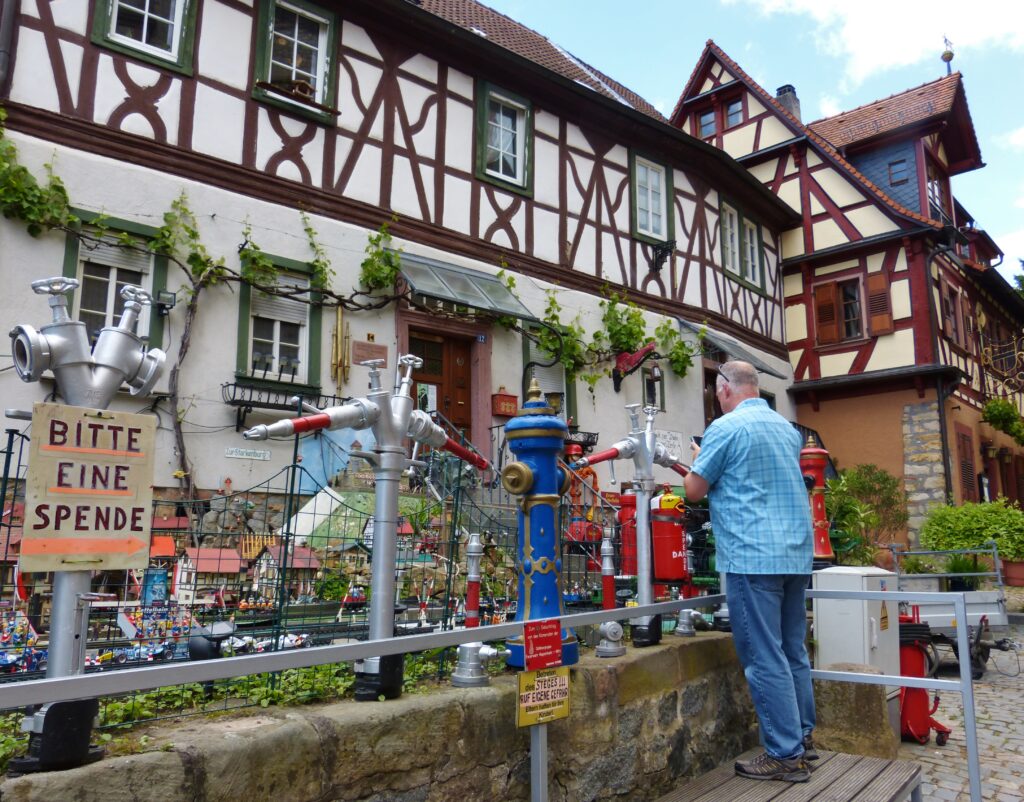
Sean, of course, was fascinated. OK, I admit I found it a bit fascinating too. The whole thing had a firefighting them to it, so if you enjoy model trains and/or firefighting, you’ll love this house. It was the type of place where you could probably spend a few hours just trying to pick up on all the little details in the setup such as wedding scenes, Oompah bands, rescue climbers and a Formula One race scene.
The buildings here are part of a complex called the Kurmainzer Amtshof, a former palace.
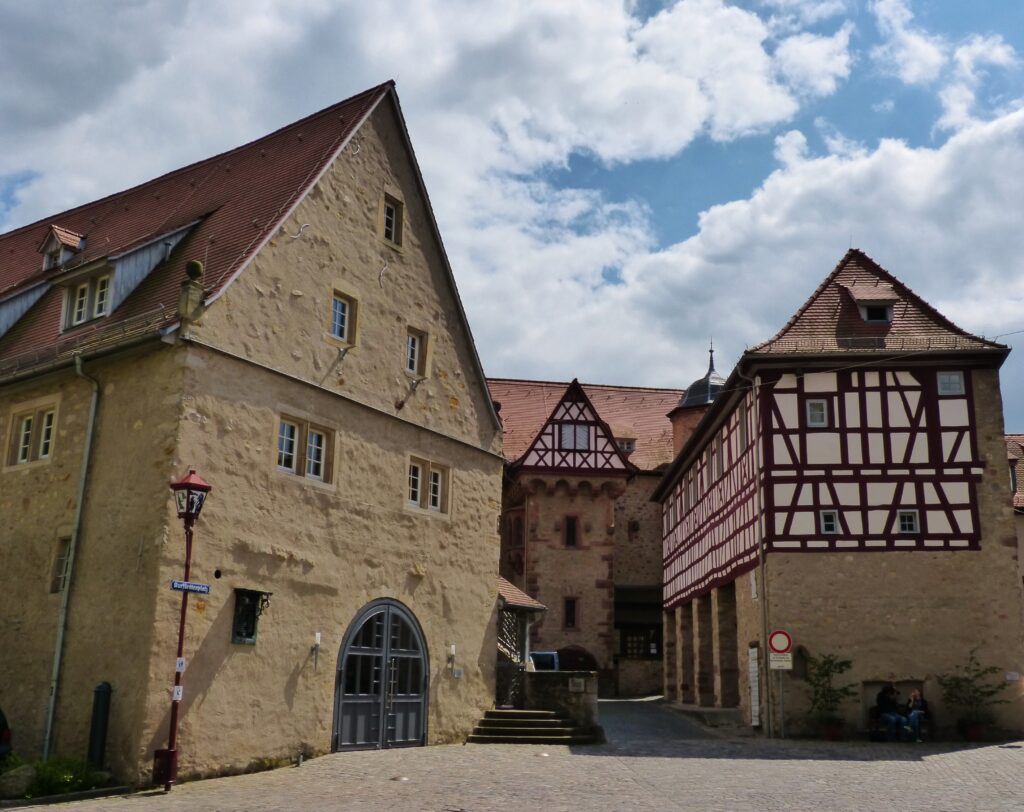
The complex dates from the 14th century. The Free Democratic Party (FDP), a German political party, was founded there. Theodor Heuss, the first chairman of the FDP, was also elected there. He was later the first president of the Federal Republic of Germany, formed 4 years after the end of World War II.
Remember when I mentioned the Oxo company at the beginning of this post?
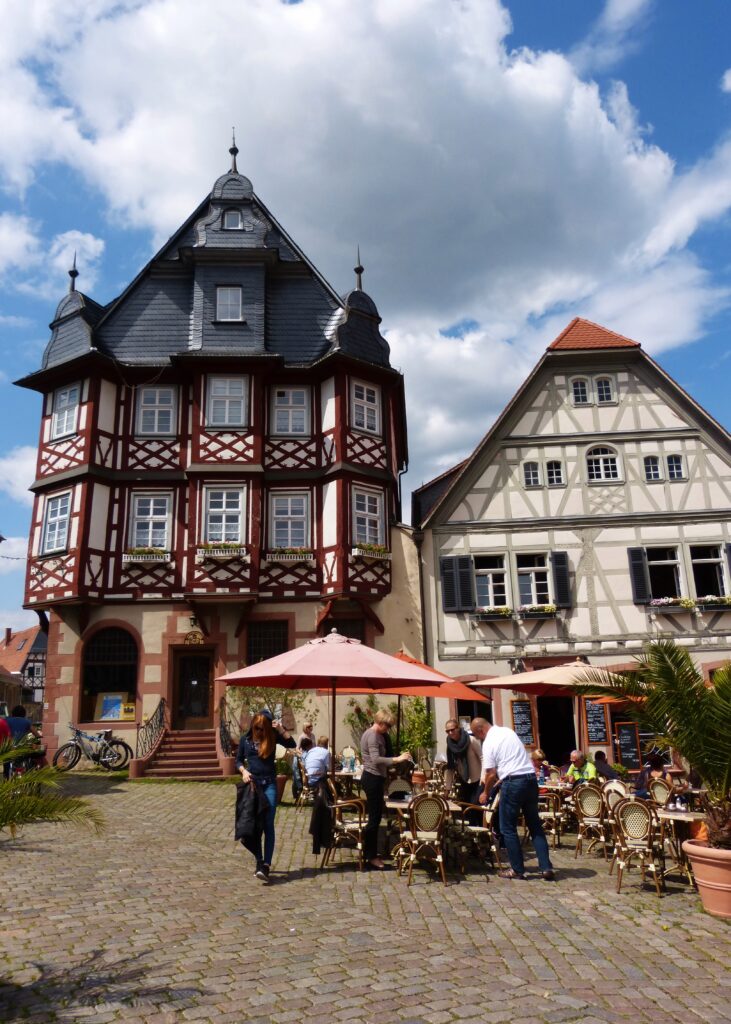
That building on the left is the former apothecary (pharmacy) where Justus von Liebig was an apprentice. He later founded a company called Liebig’s Extract of Meat that is now known as Oxo. I don’t know about you, but “bouillon cubes” sounds a bit more appealing to me than “extract of meat”. Liebig also invented nitrogen-based fertilizer as well as Marmite, a mysterious food-product consumed by Brits and Aussies.
This next house is the oldest half-timbered house in Heppenheim, dating from 1430.

Even after 3 ½ years of living in Germany, things like that never fail to impress me.
And this house, with the green shutters, is from the late 18th century and was originally a synagogue and school.

The two little round windows at the top used to be stained glass decorated with Stars of David. A new synagogue was eventually built and the house seen above was sold. It is now a painting school. (As a side note, the new synagogue was sadly destroyed in 1938, I assume around the time of Kristallnacht http://en.wikipedia.org/wiki/Kristallnacht )
Little signs like this one were hanging all over town.

It appears they are short German tales from different towns. For example, you can see that this sign says Niederursel in parentheses. That’s a small German town around 30 minutes away from us.
The gist of the story shown on this particular sign is that a foul-mouthed shoemaker was on the run from a bailiff in Frankfurt. When he got to the border of Frankfurt and Solms (another town in Germany), he jumped into an old oven that just happened to be there. He declared that because he was no longer in Frankfurt, the bailiff couldn’t touch him. However, his “back end” was in fact still in Frankfurt (as you can see in the picture) so the bailiff beat his butt. Let that be a lesson to you when jumping into an oven to escape the law.
Back at the town hall, it was time for the Tipple of the Day, an iced latte.

I absolutely love sitting at cafes on little town squares in Europe and enjoying some kind of caffeinated drink. Or sometimes an adult beverage.
After our refreshing beverages we headed back to the car.
Even the main streets in Heppenheim, like this one where we parked, are lined with lovely half-timbered houses and nice little cafes with outdoor seating areas.
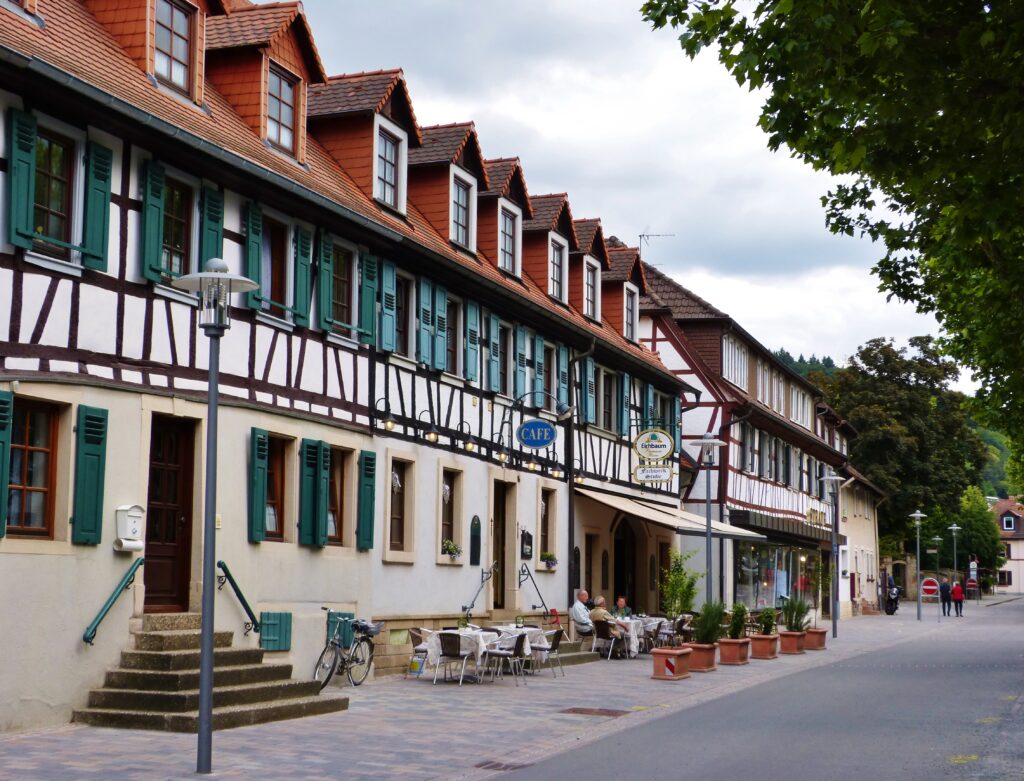
Have you explored any lesser-known towns like this one in Germany? Tell us about it here or on our Facebook page!

